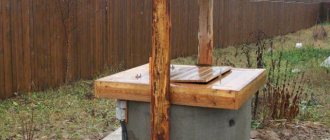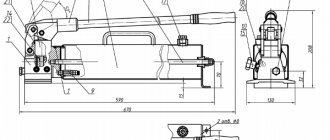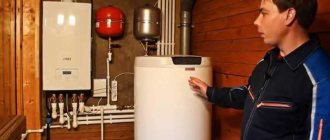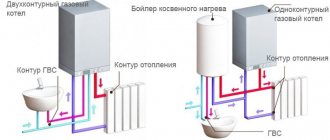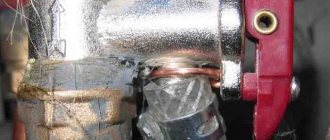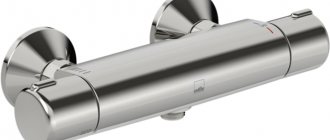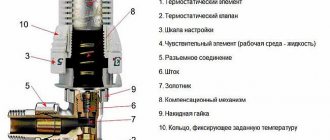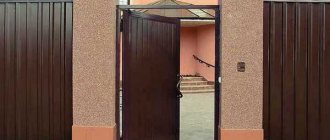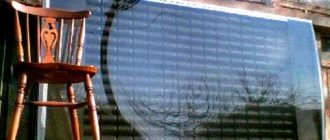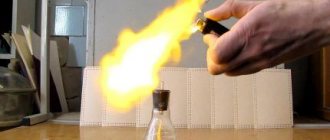The energy industry copes with its task quite confidently, but the scale of our country is such that it is not yet possible to fully provide electricity to all remote or hard-to-reach areas. This is due to many factors that are too expensive or technically unattainable to overcome under current conditions.
Therefore, more and more attention has to be paid to alternative sources that can meet the needs of backward regions without the participation of backbone networks. A promising direction is wind energy, which uses a free source of energy - the power of the wind.
Design and types of wind power plants
Wind power plants (WPPs) use wind energy to generate electricity. Large stations consist of many wind generators, united into a single network and powering large areas - towns, cities, regions. Smaller ones are capable of providing small residential areas or individual houses. Stations are classified according to various criteria, for example, by functionality:
- mobile,
- stationary.
By location:
- coastal
- offshore
- ground
- floating.
By type of construction:
- rotary,
- vane.
Vane stations are the most widespread in the world. They are highly efficient and capable of producing large enough amounts of electricity to supply consumers throughout the entire energy industry. At the same time, the distribution of such stations has a specific configuration and is not found everywhere.
Development prospects
If we take into account that there is now a focus on natural environmental methods of energy extraction, then wind energy will have a positive development outlook in the coming years. New and improved models of wind turbines are being developed all the time. One of the latest developments is floating generators that can harness the maximum power of the wind.
More and more countries in the world are paying attention to wind energy and are starting to build their own wind turbines in suitable areas. Wind energy is considered one of the most promising alternative energy sectors.
More often in demand are private wind generators, which can provide part or all of the house with energy. Traditional energy sources may soon run out and also cause irreparable harm to the environment. Many people believe that wind energy, as well as alternative environmentally friendly methods of energy production, is the future.
Principle of operation
As already mentioned, wind farms have a rotor or vane design. Rotary stations, as a rule, have devices with a vertical axis of rotation. They are in many ways more convenient than winged ones, since they do not make much noise during operation and do not require installation in the direction of the wind. At the same time, rotor designs are less efficient and can be used at small private stations.
Wing devices are capable of producing maximum effect. They use the resulting energy much more efficiently than rotary samples, but require correct orientation in relation to the flow, which means the presence of additional devices or equipment.
All types operate on the same principle - the wind flow spins the moving part, which transmits rotation to the generator, as a result of which an electric current is formed in the system. It charges the batteries, which power inverters that convert the resulting current into a standard voltage and frequency suitable for consumer devices.
To supply a large number of consumers, individual wind generators are connected into a system, forming stations - wind farms.
Conditions for efficient energy conversion in a wind generator
The main conditions for generating electricity using a wind turbine are the constancy and strength of the wind in the region of intended operation. But the efficiency of the installation is influenced by a number of additional factors, including:
- landscape of the area - the presence of nearby hills, ravines, ponds, forests;
- built-up area;
- presence of infrastructure facilities: bridges, industrial enterprises.
These and other local reasons affect the stability and direction of the wind, even if the region is conducive to installing a wind turbine. Practice shows that any obstacles located within a radius of 250 m will negatively affect the operation of the installation.
You can avoid the negative impact of local factors by installing the generator at a height of more than 5 m above the nearest object, this also applies to tree crowns.
For stable operation of the equipment, the average annual wind speed in a given area must be at least 4.5 - 5 m/s. These indicators can be found from the wind rose map. Information is available on specialized resources on the Internet.
The best result is obtained if you install the wind generator on a mast with guy wires, about 15 m high.
The necessary conditions for installation and operation, as well as the characteristics of the factory-made installation are indicated in the passport (operation manual) of the equipment.
You can find out how much a wind generator manufactured in a workshop produces by making approximate calculations.
Advantages and disadvantages of wind power plants
The advantages of wind farms include:
- independence from fossil resources;
- An absolutely free energy source is used;
- environmentally friendly method - no harm is caused to the environment.
At the same time, there are also disadvantages:
- the unevenness of the wind creates certain difficulties in generating energy and forces the use of a large number; batteries;
- windmills make noise when operating;
- The efficiency of wind power plants is low and it is very difficult to increase it;
- the cost of equipment and, accordingly, electricity is much higher than the price of network electricity;
- The payback on equipment decreases significantly as its capacity increases. The most productive stations do not fully pay for themselves.
The use of small stations can provide energy to a limited number of consumers, so large devices are required for large settlements or regions. At the same time, high-power wind turbines require appropriate wind flows and uniformity of its movement, which is not typical for the conditions of our country. This is the main reason for the low prevalence of wind turbines compared to European countries.
Criterias of choice
When choosing a wind generator, in addition to technical characteristics, it is also necessary to correctly set the required power. It is set by such a parameter as the diameter of the rotor, which can be calculated using the following formula:
Egod = 1.64 * D2 * O3
Egod – total electricity consumed by appliances at home per year, kW,
D – rotor diameter, indicated in meters,
О – average annual wind speed, meter/second.
By substituting known parameters into this form, it is possible to calculate what diameter rotor a wind power plant for a home should be equipped with in a particular case.
Economic justification for the construction of a wind farm
From an economic point of view, the construction of a wind farm makes sense only in the absence of other methods of energy supply. The equipment is very expensive, maintenance and repair require constant costs, and the service life is limited to 20 years, and this is in European conditions. For Russia, this period can be reduced by no less than a third. Therefore, the use of wind power plants is economically ineffective.
On the other hand, in the complete absence of alternative options or in the presence of optimal conditions that ensure high-quality and uniform operation of wind turbines, the use of wind farms becomes a completely acceptable way to supply energy.
Important! We are talking specifically about large stations that supply entire regions. The situation with household or private stations looks more attractive.
Wind energy as a potential oncogene
“Wind generator syndrome” is the clinical name for symptoms of people who live near wind turbines. The main symptoms are fatigue, insomnia, irritability, headaches, tinnitus, problems with concentration. All these symptoms may appear due to the fact that the operation of the generator produces low-frequency noise that our hearing does not perceive, but our body reacts.
This syndrome is not officially recognized, and some consider it a classic case of nocebo effect. This means that the body’s reaction is caused not by the actions of the generator, but by negative information about it.
Capacity of industrial stations
Industrial wind farms have very high power, capable of supplying large settlements or regions. For example, the Gansu wind farm in China has 7965 MW, Enercon E-126 produces 7.58 MW , and this is not the limit.
It should be noted right away that we are talking about leaders in wind energy; other models produce much less energy. However, when combined into large stations, wind turbines are capable of producing quite a sufficient amount of electricity. The combined complexes generate a total power of 400-500 MW, which can easily be compared with the productivity of hydroelectric power stations.
Small stations have more modest indicators and can only be considered as point sources that supply a limited number of consumers.
Wind power automation
Modern electric wind turbines are equipped with a developed automation system, which:
- significantly improves performance;
- ensures equalization of output power;
- makes operation safe.
A typical automation set includes:
- wind wheel speed limiter at high wind speeds;
- alignment of the wheel “with the flow” (important for horizontal wind turbines);
- short circuit protection;
- shutdown in case of equipment failures, hurricane winds, or exceeding the threshold vibration level.
Middle and high class models necessarily support remote control and diagnostics. Some of the units additionally control the direction and strength of the air flow to maximize the output power by selecting the appropriate installation angle of the entire device and turbine blades.
Geography of application
Wind energy is most widespread on the west coast of the Atlantic, in particular in Germany. There are the best conditions - smooth and strong winds, optimal climatic indicators. But the main reason for the widespread use of wind power plants in this region was the lack of opportunities for the construction of hydroelectric power plants, which forced the governments of the countries in this region to use available methods of generating electricity. At the same time, there are installations in the Baltic region, Denmark, and Holland.
Russia is still lagging behind in this matter; over the past decade, barely a dozen wind farms have been commissioned. The reason for this lag lies in the great development of hydropower and the lack of proper conditions for the operation of industrial wind power stations. However, there is an increase in the production of small installations capable of providing energy to individual estates.
Practical advice
- Analyze the wind conditions in the area where your existing or future home is located as carefully as possible. Average annual data must be at least 3m/sec.
- Explore proposed wind turbine designs. Consider the possibility of generating electricity in low winds, as well as the area of part of the site that will have to be removed for installation of a wind turbine.
- Conduct an economic analysis of the costs of the entire set of equipment included in the wind power plant and its installation, on the one hand. On the other hand, there is the cost of laying a stationary electrical network to the site. Please note that the cost of wind energy will be free!
- The most practical design, in our opinion, is a wind-axial generator with the addition of solar panels and a diesel motor-generator.
Facts and Misconceptions
The low prevalence of wind power plants and the lack of experience with them have given rise to a lot of misconceptions regarding the properties and impact of wind power plants on the human body. Thus, there is a widespread belief that the noise level produced by an operating wind generator is unusually high. Indeed, there is some noise, but its level is much lower than is commonly believed. Thus, the noise from industrial models at a distance of 200-300 m is perceived by ear in the same way as the sound from a working household refrigerator.
Another problem that is unreasonably exaggerated by ignorant people is the creation of insurmountable interference with radio and television signals. This issue was resolved before users knew about it - every powerful industrial windmill is equipped with a high-quality radio interference filter that can completely eliminate the device’s influence on the airwaves.
People living near turbines will constantly be in the shadow flickering zone. This is a term that refers to the uncomfortable sensation of flashing light displays. Rotating blades create this effect, but its significance is greatly exaggerated. Even the most sensitive people can always simply turn away from a turbine if they happen to be close to it.
There are other, far-fetched and quite real facts regarding the operation of wind farms, their impact on the human body and the surrounding nature. Some of them are ordinary rumors, others are so exaggerated that they do not even deserve discussion. Wind energy is a full-fledged industry capable of solving energy supply issues both on a large scale and within the confines of a small country house.
Wind energy as a threat to wildlife
Bird advocates oppose the construction of wind turbines because birds often crash into wind turbine blades. Although calculations have shown that the number of birds killed by the generator is no more than by high-voltage wires. However, animal rights activists are worried that during the migration of birds they may end up in the wind park area or change their migration route.
Another concern of defenders is that the noise that the generators make can scare away animals and they change their habitat.
Private wind farms
For Russia, the most pressing issue is the distribution of small stations that supply one house or estate. The construction of large wind farms in the climatic conditions of our country is impractical and unprofitable. The greatest value of wind turbines lies in the ability to provide energy to backward or remote communities where there is no grid connection.
For such areas, the use of small private stations is the best way to solve the problem, since the operation of a wind turbine does not require the provision of fuel, the device is simple and can be easily repaired. Providing such regions with additional equipment is much easier and cheaper than allocating large amounts of money for power transmission lines, especially when it comes to mountainous areas. Small wind turbines can generate a sufficient amount of energy without the need for maintenance or fuel costs, making them a very promising and attractive solution to the problem.
False theories
The most common myths about wind energy:
- Windmills kill birds. It’s hard to deny that birds sometimes crash into the blades or mast of a wind turbine and die. But just as many birds are killed by electrical wires. According to statistics, most birds die due to cat attacks.
- The most common false theory is that the noise from a wind generator can negatively affect human health, including complications with the hearing organs.
- Not an environmentally friendly source, since the increase in the number of wind farms increases carbon dioxide emissions. Yes, but compared to coal or gas power plants, this figure is 50 times less.
- Unemployment. There is a belief that generating energy this way will eliminate jobs, but this myth is easy to dispel. Unemployment cannot arise in any developing sector, since wind energy always needs new personnel - researchers, developers.
False theories appear due to ignorance of the topic, but all of them are easy to refute, which has been done many times.
Review of prices for popular models
The cost of wind generators is high. This moment is the most difficult to overcome for the spread of wind energy technologies. Many home owners would love to install wind turbines on their property, but do not have the funds to purchase them. An installation capable of providing lighting to an area costs about 100 thousand rubles.
A more powerful design that allows you to supply electricity to a cottage will cost 250 thousand.
A wind farm capable of supporting a small farm costs about 500 thousand rubles. And this is not the limit. At such prices, one cannot expect a rapid spread of wind generators, so all hope is for the emergence of domestic models that can solve the issue of high cost of equipment. Alternatively, you can buy a relatively inexpensive Chinese model. Such devices cannot be repaired, being, in fact, disposable, but their price is much lower than the cost of Western models of similar power.
Varieties
In order to choose the right wind generator, you must first take into account its technical parameters. Modern models differ in the following number of characteristics:
- The number of propeller blades. A large number of screw elements complicates the design. However, the more blades, the lower the wind speed needed to start the mechanism.
- Type of blade material. Models with rigid propellers are stronger and more durable, but also much more expensive than their sailing counterparts.
Multi-blade wind generator for your home Source ytimg.com
- The location of the rotation guide. Divided into vertical and horizontal. The former are stronger and more sensitive, the latter have better performance.
- Possibility of changing step characteristics. They differ in models with variable and constant pitch. Products with variable step parameters allow you to increase speed, and therefore productivity. However, they are more complex, bulky and expensive.
Good to know! Factory models widely available today are quite expensive. Therefore, those who want to install such an autonomous power plant often have the question of how to make a wind generator. Homemade analogues are often made from car generators connected according to a circuit with a similar 12-volt battery.
Manufacturers
The domestic industry has established serial production of a wide range of household wind generators. Their parameters are shown in the table:
| Model | Manufacturer | Type | Power | Note |
| VG 0.25 | Vetro Svet, Russia | G | 250 W | — |
| VEU-3(4) | SKB Iskra, Russia | IN | 3 kW | 4-blade model |
| Series L | Wind power, Russia | IN | 0.8 – 10 kW | — |
| RKraft | Germany | G | 0.5 – 5 kW | — |
| Wind Generator M300 | China | IN | 100 – 270 W | 6-blade rotor with a diameter of 1 m, weight 11 kg, does not have a controller |
| Condor Home | EDS Group, Russia | G | 500 W | 3-blade fiberglass rotor Maximum wind speed 25 m/s Weight 56 kg |
Note: G – horizontal, V – vertical
Braking system
The braking system prevents mechanical destruction of the unit when the wind speed is too high. The essence of this system is that the automation closes the electrical circuits of the magnetic system of the generator, which leads to the appearance of a powerful braking force.
Additionally, the operating algorithm of the control system provides for a complete shutdown of the air turbine during hurricane-force winds. The stop threshold can be adjusted by the user; typical factory settings for this parameter assume the stop mode is activated at a speed of 80 km/h.
Classification
The main criteria that determine the types of wind turbines are the following:
- The difference is in the number of blades. High-speed and low-blade devices have up to 4 blades, and 4 and higher belong to low-speed multi-blade devices. The fewer the number of blades, the higher the engine speed.
- Rated power value. Household - up to 15 kW, semi-industrial - from 15 to 100 kW, industrial - from 100 kW to 1 MW. The boundaries between the indicators are quite arbitrary, so settings are applied where it is really necessary.
- Axis direction. Two types are used in the designs. In the first case, this is a horizontal axis located perpendicular to the air movement, reminiscent of a regular weather vane. Such generators are characterized by higher efficiency and reasonable cost. The second option is a vertical axis, which makes the generator design more compact. It does not depend on the direction of the wind, and its blades are made in the form of turbines. The axle load is significantly reduced, therefore the power of such installations is much less. Some power plants simultaneously use several generators with different axes, connected in a network, which makes it possible to obtain high power in a relatively small area.
